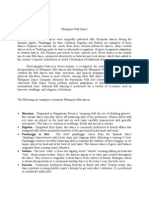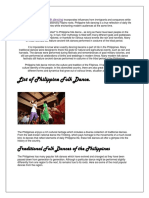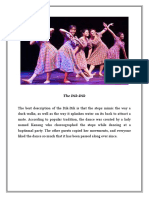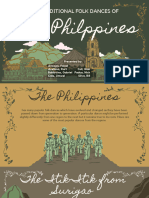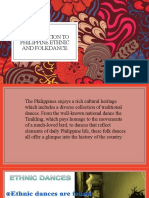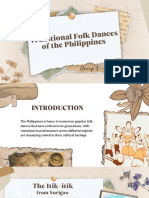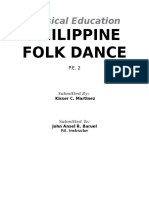0% found this document useful (0 votes)
254 views9 pagesClassifications of Dances Found in The Philippines (Dance of The Countryside)
This document discusses several traditional dances from the Philippine countryside, including:
1) Pandanggo Sa Ilaw, a graceful dance from Mindoro involving balancing oil lamps.
2) Kuratsa, a lively dance from different regions during the Spanish regime.
3) Maglalatik, a war dance from Biñan, Laguna depicting battles between Moros and Christians.
4) Tinikling, mimicking the movements of birds dodging bamboo traps used by farmers in Leyte.
Uploaded by
Stephany BumaatCopyright
© © All Rights Reserved
We take content rights seriously. If you suspect this is your content, claim it here.
Available Formats
Download as DOCX, PDF, TXT or read online on Scribd
0% found this document useful (0 votes)
254 views9 pagesClassifications of Dances Found in The Philippines (Dance of The Countryside)
This document discusses several traditional dances from the Philippine countryside, including:
1) Pandanggo Sa Ilaw, a graceful dance from Mindoro involving balancing oil lamps.
2) Kuratsa, a lively dance from different regions during the Spanish regime.
3) Maglalatik, a war dance from Biñan, Laguna depicting battles between Moros and Christians.
4) Tinikling, mimicking the movements of birds dodging bamboo traps used by farmers in Leyte.
Uploaded by
Stephany BumaatCopyright
© © All Rights Reserved
We take content rights seriously. If you suspect this is your content, claim it here.
Available Formats
Download as DOCX, PDF, TXT or read online on Scribd
/ 9



















